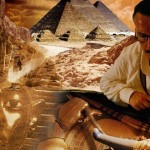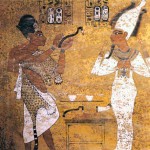Edition - November, 2013

Overview of the BBC’s “Egypt – The Search for Tutankhamun”
By Andrea Byrnes and Dylan Bickerstaffe. Published on In Brief, 14th November 2013. Egypt: Series 1 – 1. The Search for Tutankhamun Part 1 of a six-part series by the BBC Director – Ferdinand Fairfax Executive Producer – Phil Dolling Series Producer – Paul Bradshaw Writer – Tony Mulholland Narrator – Andrew Sachs Described as […] [more…]

Replicating the tomb of Tutankhamun. Conservation and sustainable tourism in the Valley of the Kings
The closure of the tomb of Tutankhamun, to be replaced by an exact facsimile, has been much reported in the UK media and highlights a number of issues and raises some interesting questions. Although this is largely a discussion about the tomb of Tutankhamun, the tomb cannot be discussed in isolation and is put into the wider context of conservation issues across the royal cemeteries of the West Bank and broader globally-relevant issues of sustainable tourism. [more…]

Arthur Cruttenden Mace – Taking His Rightful Place, Part 2
In Part 1, we discovered how Arthur Mace took excellent advantage of a distinguished family name, overcoming the fact that wealth would not play a part in making his dreams a reality. Through education, an apprenticeship with his distinguished relative Flinders Petrie and a devotion to proper artifact conservation, Mace ensured respect from his peers. In Part 2, I will show how Mace continued to make contributions to Egyptology throughout a prolonged illness. His conservation techniques preserved artifacts spanning the Metropolitan Museum in New York to the pyramids in Lisht. Mace’s final acts of preservation, as he worked in the tomb of a previously unknown pharaoh made a name for him, although it may very well may have also contributed to his untimely passing. [more…]
 By
By